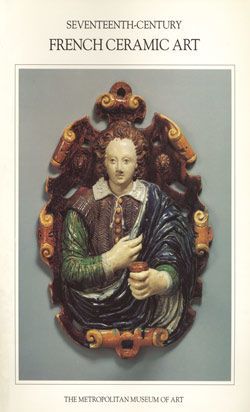Dish
Not on view
This tray exhibits a combination of influences not unusual in French faience in the early eighteenth century. While the form seems to be derived from an imported Japanese lacquer model—lacquer being for decades highly regarded in France—the twisted and spotted handles look back to a style common in Nevers faience in the preceding century. The blue-and-white decoration of grotesques ins in the court style of Jean Bérain I (1637–1711), a leading designer at the court of Louis XIV. (Grotesques were first developed as a slight painted wall decoration in the first century B.C. for the urban palaces and country villas of wealthy Romans. These classic grotesques were discovered through excavation in the late fifteenth century. The genre was copied and adopted by artists of the Renaissance, and never entirely disappeared from European art. In its essentials the style deployed a variety of human, animal, and mythical beings, upon the slightest of stepped architectural supports or pergolas.)
In Moustiers faience the earliest documented use of the grotesque style of Jean Bérain I, available to the factory in the form of prints, is a dish made between 1696 and 1700 for Jean Charles de Crussol, seventh Dux d’Uzès and his wife Anne Hypolite de Grimaldi, a Princess of Monaco.
Just as several generations of the Clérissy family owned and ran the factory, so several generations of the Viry family were active there as painters. The first of that name, François Viry (1614–1689), a painter from the town of Rietz near Moutsiers, was engaged in 1682 to take charge of the painting atelier. Work signed by his son Gaspard is known.
Due to rights restrictions, this image cannot be enlarged, viewed at full screen, or downloaded.


